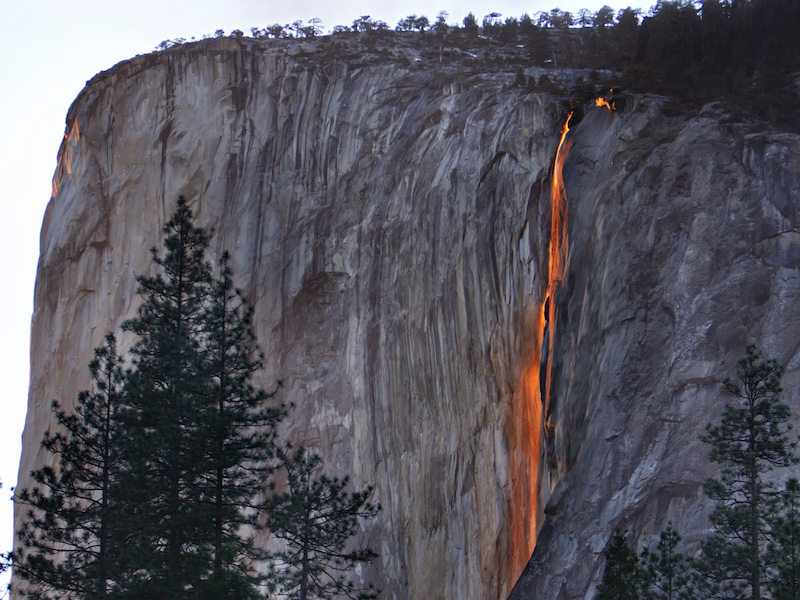Flowing Fire? Yosemite's 'Burning' Waterfall Explained

It may look like a ribbon of cascading lava, but a so-called "firefall" in Yosemite National Park is actually a regular waterfall illuminated by the bright light of the setting sun.
Almost every mid-to late-February, Yosemite's Horsetail Fall — a seasonal waterfall that flows when the snowpack melts in the winter and early spring — glows a bright and fiery orange. [Gallery: Most Famous Waterfalls in the US]
However, the firefall happens only under the right conditions. For starters, the sky needs to be clear. In addition, the sun needs to set at the right angle in the western sky; this creates the illusion that the waterfall is burning, Live Science reported previously.
"Even some haze or minor cloudiness can greatly diminish or eliminate the effect," the National Park Service wrote on its website.
The sight, which now attracts thousands of people annually, is one to behold. But it's short-lived, happening for only about 10 minutes each day, Live Science reported.
Yosemite visitors hoping to catch an eyeful of the firefall are in for a treat this year, officials said.
"The waterfall is bigger than it has been in a long time due to all the rain and snow we have received," National Park Service spokesman Scott Gediman told CNN.
Sign up for the Live Science daily newsletter now
Get the world’s most fascinating discoveries delivered straight to your inbox.
Many people have taken to social media to share photos of the astounding firefall. The U.S. Department of the Interior tweeted, "Every February, a rare phenomenon makes Horsetail Fall @Yosemitenps glow like fire. Pic from Saturday by Ray Lee #California #firefall."
Meanwhile, on Instagram, rayophotography13 posted a fiery photo for Valentine's Day.
Horsetail Fall flows over the eastern edge of El Capitan in Yosemite Valley. The firefall is best seen from the El Capitan picnic area, located west of Yosemite Valley Lodge and east of El Capitan, National Park Service officials reported.
Original article on Live Science.

Laura is the archaeology and Life's Little Mysteries editor at Live Science. She also reports on general science, including paleontology. Her work has appeared in The New York Times, Scholastic, Popular Science and Spectrum, a site on autism research. She has won multiple awards from the Society of Professional Journalists and the Washington Newspaper Publishers Association for her reporting at a weekly newspaper near Seattle. Laura holds a bachelor's degree in English literature and psychology from Washington University in St. Louis and a master's degree in science writing from NYU.









